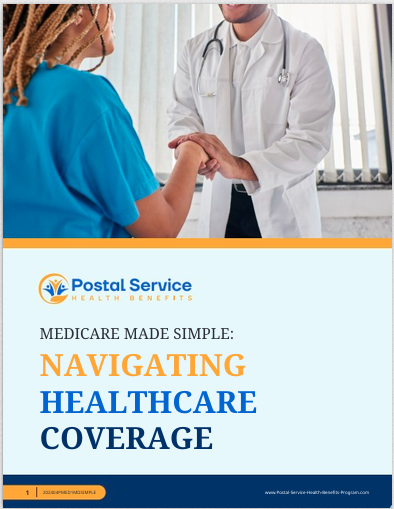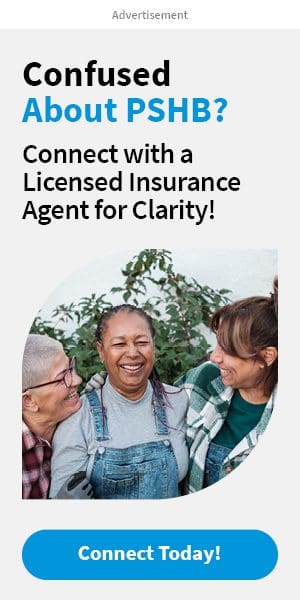Key Takeaways
- Postal workers must be proactive in 2025 to ensure their dependents maintain health coverage under the new PSHB (Postal Service Health Benefits) program.
- Understanding enrollment periods and eligibility criteria is crucial for securing continued coverage for family members.
How Postal Workers Can Ensure Their Dependents Are Covered Under Health Benefits in 2025
Starting in 2025, postal workers will experience significant changes in their health benefits, particularly with the introduction of the Postal Service Health Benefits (PSHB) program. As part of the sweeping reforms under the Postal Service Reform Act of 2022, the PSHB will replace the current Federal Employees Health Benefits (FEHB) program for postal workers. While these changes aim to streamline and improve health benefits, they also require postal workers to be vigilant in ensuring that their dependents are covered. This article provides essential information for postal workers to navigate the transition effectively and secure health benefits for their dependents.
Understanding the PSHB and Its Impact
The Postal Service Health Benefits (PSHB) program represents a major shift from the Federal Employees Health Benefits (FEHB) program, which has been the standard for federal employees, including postal workers, for decades. The transition is set to begin with the 2025 plan year, and it is crucial for postal workers to understand how this will impact their health coverage and, more importantly, their dependents’ coverage.
Under the PSHB, postal workers will be automatically enrolled in the new program, but the enrollment process for dependents may require additional steps. This new system is designed to offer health benefits that are more tailored to the needs of postal employees, but it also introduces changes in enrollment processes, eligibility criteria, and plan options.
Key Dates to Remember
- January 2025: The PSHB officially replaces the FEHB for postal workers.
- Fall 2024: Open Season for PSHB enrollment, where postal workers need to make selections for their 2025 health coverage.
- March 31, 2024: Deadline for postal workers to ensure their dependents are correctly enrolled to avoid any lapse in coverage.
These dates are crucial as missing them could result in a loss of coverage for dependents. It is essential for postal workers to mark their calendars and stay informed about these critical deadlines.
Determining Dependent Eligibility
Ensuring that dependents are covered under the PSHB starts with understanding who qualifies as a dependent. The eligibility criteria under the PSHB program are expected to mirror those of the FEHB, which includes spouses, children under the age of 26, and, in some cases, disabled dependents over the age of 26 who are incapable of self-support.
Steps to Verify Eligibility
- Review the Eligibility Criteria: Check the specific eligibility requirements under the PSHB to confirm that all current dependents meet the criteria.
- Gather Necessary Documentation: Ensure that you have the required documents, such as birth certificates, marriage certificates, and, if applicable, documentation of disability for dependents over age 26.
- Update Records: Verify that all dependent information is accurate and up-to-date with the USPS Human Resources department. This step is crucial as any discrepancies could delay or jeopardize enrollment.
Navigating the Enrollment Process
The transition to the PSHB will require postal workers to take action during the Open Season. This period, usually occurring in the fall, allows employees to select or change their health insurance plans. For 2025, it will be a critical time for postal workers to ensure their dependents are transitioned smoothly into the new PSHB program.
Open Season Enrollment Tips
- Act Early: Don’t wait until the last minute to enroll or verify your dependents’ coverage. The earlier you act, the more time you have to address any potential issues.
- Double-Check Plan Options: Carefully review the plan options available under the PSHB to select one that best meets your family’s needs.
- Use Online Resources: Take advantage of USPS and PSHB online tools designed to help you navigate the enrollment process. These tools often provide step-by-step guides and FAQs that can clarify any confusion.
Avoiding Common Pitfalls
- Missed Deadlines: One of the most common reasons dependents lose coverage is missed enrollment deadlines. Keep track of all key dates and set reminders if necessary.
- Incomplete Documentation: Failure to provide complete and accurate documentation can result in delays or denial of coverage. Ensure all required documents are submitted on time and are properly filled out.
Addressing Special Circumstances
Postal workers with unique family situations, such as blended families, dependent children with special needs, or dependents living abroad, may face additional challenges during the transition to PSHB. Understanding how these special circumstances are handled under the new program is essential to maintaining coverage.
Blended Families and Stepchildren
In cases where postal workers have stepchildren or are part of a blended family, it’s important to understand how PSHB handles these relationships. Generally, stepchildren are considered eligible dependents if they live with the postal worker in a parent-child relationship. However, specific documentation proving this relationship may be required.
Children with Special Needs
For postal workers with disabled children over the age of 26, it is vital to confirm that these dependents remain covered under the PSHB. This typically involves providing proof of the disability and certification that the dependent is incapable of self-support due to the disability. Ensure that all necessary paperwork is submitted before the March 31, 2024, deadline to avoid a lapse in coverage.
Dependents Living Abroad
If you have dependents who reside outside the United States, special considerations may be needed for their coverage under the PSHB. Check with the PSHB program guidelines to understand how coverage works for dependents abroad, and whether additional steps are needed to maintain their benefits.
Post-Enrollment Responsibilities
Once the Open Season has passed and enrollment is complete, postal workers should not consider their responsibilities finished. It is crucial to regularly review and update dependent information to ensure continued coverage throughout the year.
Annual Verification
PSHB may require postal workers to verify dependent eligibility annually. This process ensures that only eligible dependents remain on the health plan, which helps to avoid issues such as ineligible dependents accidentally being covered. Be prepared to provide updated documentation as needed and respond promptly to any verification requests from the USPS or PSHB.
Monitoring Coverage
Even after enrollment, it is important to monitor the health coverage status of your dependents. Regularly check your benefits statements and any correspondence from PSHB to ensure there are no unexpected changes to coverage. If any issues arise, contact the PSHB support team immediately to resolve them.
Keeping Records Updated
Life events such as marriage, divorce, the birth of a child, or a dependent aging out of eligibility can all impact health coverage. Postal workers must promptly report these changes to the PSHB to ensure that dependent coverage is adjusted accordingly. Failing to report these changes could result in the loss of coverage or the continuation of coverage for an ineligible dependent, which could lead to penalties.
What to Do if Coverage Is Denied
In some cases, despite all precautions, a postal worker may find that their dependent’s coverage is denied under the PSHB. If this happens, it is important to act quickly to resolve the issue.
Steps to Take
- Review the Denial Notice: Carefully read the denial notice to understand the reason for the denial. This will help you determine the next steps.
- Contact PSHB Customer Service: Reach out to the PSHB customer service for clarification and assistance. They can provide guidance on how to appeal the decision or correct any errors that may have led to the denial.
- Submit an Appeal: If necessary, submit a formal appeal. Be sure to include all required documentation and a clear explanation of why the denial should be overturned.
Acting quickly is crucial to avoid gaps in coverage, which could leave your dependents without necessary healthcare services.
Preparing for PSHB in 2025
The transition to the Postal Service Health Benefits program in 2025 marks a significant change for postal workers and their families. By staying informed, understanding eligibility requirements, and being proactive during the enrollment period, postal workers can ensure that their dependents remain covered under health benefits. Keeping track of deadlines, updating documentation, and addressing any issues promptly will be key to navigating this new landscape successfully.
Contact Information:
Email: [email protected]
Phone: 6155552345






